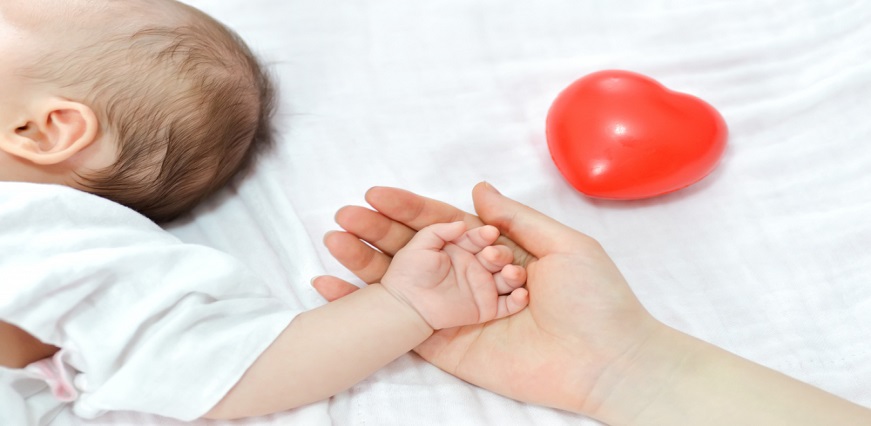Potter syndrome is a condition that occurs when the kidneys fail to develop properly during pregnancy. This can lead to a number of complications, including death. The cause of Potter syndrome is unknown, but it is thought to be due to a problem with the development of the kidneys and urinary tract. This can happen if the fetus doesn’t have enough amniotic fluid surrounding it during development. There are a number of potential complications associated with Potter syndrome, including respiratory problems, pulmonary hypertension, and cardiac abnormalities. Treatment typically involves supportive care and management of symptoms. In this blog post, we will explore the causes, symptoms, diagnosis, and treatment of Potter syndrome.
What is Potter Syndrome?
Potter syndrome, also known as Potter sequence, is a birth defect characterized by oligohydramnios (reduced amniotic fluid), pulmonary hypoplasia (underdeveloped lungs), and renal agenesis (absence of kidneys). Affected infants often have a distinctive facial appearance, with a small nose, recessed chin, and low-set ears. Each infant's ailment is different in severity. In some cases, both kidneys may be absent. In other cases, one kidney may be present but poorly developed.
In utero, the lack of amniotic fluid leads to compression of the fetal lungs, which prevents them from developing properly. The severity of the lung damage depends on how long the fetus is deprived of amniotic fluid. If Potter syndrome is diagnosed prenatally (before birth), it is usually because ultrasound has detected oligohydramnios.
What are the symptoms of Potter Syndrome?
The most common symptom of Potter syndrome is oligohydramnios, a condition in which too little amniotic fluid surrounds the fetus. Other symptoms of Potter syndrome include:
- eyes that are far apart and have epicanthal folds
- broad nasal bridge
- low set ears
- receding chin
- Absence of urine output
- Difficulty breathing
- heart defects
- skeletal abnormalities
- intellectual disability
What are the Complications for Potter Syndrome
- Pulmonary hypoplasia: This occurs when the lungs do not develop properly and can lead to respiratory problems after birth.
- Potter facies: This refers to the characteristic facial features of Potter syndrome, which include a small chin, low-set ears, and deep-set eyes.
- Renal agenesis: One or both kidneys do not develop properly. This can lead to kidney failure and requires dialysis or transplantation.
Other potential symptoms of Potter syndrome include heart defects, skeletal abnormalities, and intellectual disability.
What Causes Potter Syndrome?
There are two main types of Potter syndrome: autosomal recessive and X-linked.
Autosomal recessive Potter syndrome is caused by a mutation in the gene encoding the transcription factor PLAC1. This results in an abnormal placenta that doesn't develop properly, which leads to oligohydramnios (reduced amniotic fluid) and poor fetal growth.
X-linked Potter syndrome is caused by a mutation in the gene encoding the protein podocalyxin. This also leads to an abnormal placenta and oligohydramnios, but because it's X-linked, it only affects males.
Potter syndrome can also be caused by other factors, including:
- Twin-to-twin transfusion syndrome (TTTS) – where one twin receives too much blood from the other twin through their shared placenta
- Maternal diabetes mellitus – high blood sugar levels during pregnancy can damage the kidneys of the developing fetus
- Maternal hypertension – high blood pressure during pregnancy can damage the placenta
What are the Different Types of Potter Syndrome?
Here are two types of Potter syndrome:
- Classic Potter syndrome is characterized by kidney agenesis, oligohydramnios (reduced amniotic fluid), pulmonary hypoplasia (underdeveloped lungs), and limb deformities.
- Variant Potter syndrome is similar to classic Potter syndrome but also includes anomalies of the gastrointestinal tract, heart, and skeleton.
How is Potter Syndrome Diagnosed?
Potter syndrome is typically diagnosed before birth via prenatal ultrasound. In some cases, it may not be possible to make a definitive diagnosis until after the baby is born. Once Potter syndrome is suspected, a variety of tests can be used to confirm the diagnosis, including:
- A physical examination: This can help to assess the infant’s overall health and development as well as identify any physical abnormalities associated with Potter syndrome.
- A karyotype: This test looks at the chromosomes in cells and can be used to diagnose genetic conditions like Potter syndrome.
- An amniotic fluid analysis: This test can be used to look for certain markers in the amniotic fluid that may indicate Potter syndrome.
- A renal biopsy: This involves taking a small sample of kidney tissue for further testing. A renal biopsy can help to confirm a diagnosis of Potter syndrome and assess the severity of the condition.
How is Potter Syndrome Treated?
The main goal of treatment for Potter syndrome is to improve the baby’s quality of life. This can be done by:
- Improving feeding and nutrition
- Decreasing the risk of infections
- Supporting breathing
- Preventing or treating heart problems
- Treating any other associated health conditions
- Providing emotional support for the family
How to Prevent Potter Syndrome?
There is no known way to prevent Potter syndrome. However, early detection and treatment of the condition can improve the outlook for affected infants.
Potter syndrome is a rare congenital condition that results in abnormal development of the kidneys and lungs. The condition is named for Dr. Edward Potter, who first described it in an infant in 1848.
When to visit a Doctor if your Child has Potter Syndrome?
If your child has any of the symptoms of Potter syndrome, it is important to visit a doctor as soon as possible. Early diagnosis and treatment can improve the outlook for your child.
The most common symptom of Potter syndrome is oligohydramnios, or low levels of amniotic fluid, which can occur before birth. Other symptoms may include:
- Pulmonary hypoplasia (underdeveloped lungs)
- Renal agenesis (absence of one or both kidneys)
- Imperforate anus (an opening in the wrong place)
- Skeletal abnormalities
These symptoms can cause life-threatening health problems for your child if they are not treated promptly.













 7982100200
7982100200





















 To reach our help desk call 9213188888
To reach our help desk call 9213188888.png)
Comments